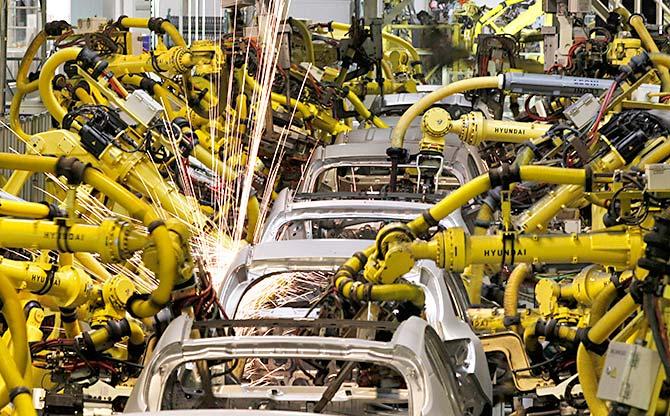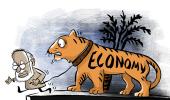The company's planned capex for 2019-2020, which was Rs 12,000 crore, has now been revised down to around Rs 8,000 crore.

Tata Steel is recalibrating its capital expenditure (capex) for 2019-2020 in line with market conditions and lower cashflows.
The company's planned capex for 2019-2020, which was Rs 12,000 crore, has now been revised down to around Rs 8,000 crore. Of the Rs 12,000 crore capex planned earlier, roughly Rs 8,000 crore was for India operations and the rest Rs 4,000 crore for Europe.
T V Narendran, chief executive officer and managing director, Tata Steel, said, both geographies will see a cut in capex.
The India spend is largely focused on the steel major's Kalinganagar plant, which is undergoing its second phase of expansion of five million tonnes.
"We will continue with the Kaliganagar project, but we have a way to prioritise. So we are focusing on the cold rolling mill which adds value without adding volume; priority is being given to the pellet plant for cost benefits. Basically, the multiple items that we spend capital on are prioritised," Narendran said.
On the completion of the Kalinganagar expansion, Narendran said, "We had set a timeline of four years from board approval which would have been between end of calendar year 2021 and financial year 2022. Within the financial year we have 12 months, so we can push it around a bit."
Steel prices have been under pressure globally. In India, liquidity issues have negatively impacted domestic consumption and business sentiments. Sequentially, while infrastructure and construction sectors have improved, demand in automobile, capital goods and consumer goods sectors continued to be weak.
However, Narendran is optimistic that demand will improve in the second half of the year.
"The government is taking a number of steps. The finance minister has been engaging with the industry. The Reserve Bank of India (RBI) also has already taken steps. We are hopeful," Narendran said.
He was speaking at the re-launch of 'Steeljunction', a one stop destination for consumers to go steel shopping, for B2C consumers.
Narendran also said that Tata Steel is simplifying its corporate structure by reducing the number of subsidiaries by 100-120. The company has about 300 subsidiaries in Europe. "Many of them were created over a period of time. So a cleanup is going on in Europe," he said.
Tata Steel is planning to bring some of its operating subsidiaries in India together -- they will be reorganised into four verticals to drive scale, simplicity and synergy. The likely verticals are long products, downstream, infrastructure and utilities and mining.
Usha Martin, acquired earlier by Tata Sponge, will be renamed Tata Steel Long Products and it is being mooted as a vehicle for growth in long products.
"Similarly, we are thinking of creating a downstream company for many of our assets. Infrastructure and utility services arms could be merged into another company, or may be into a mining company for our mining assets," he said.












 © 2025
© 2025